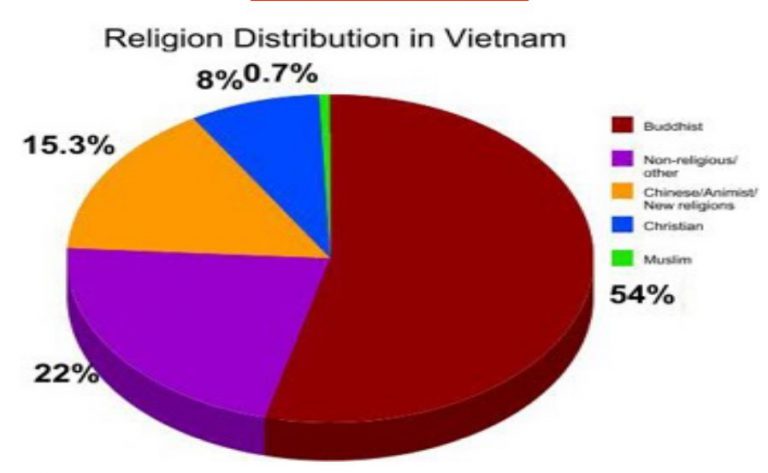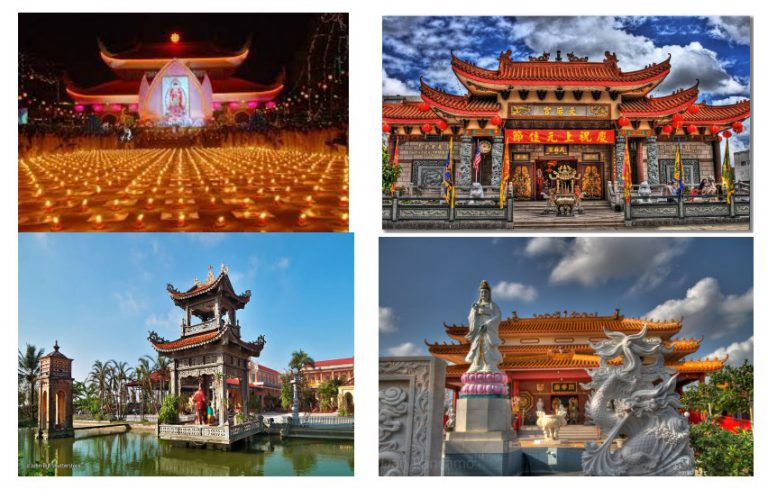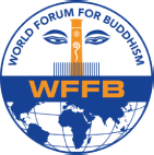Presently, by some estimates, over 70 percent of the population of Vietnam are either Buddhist or follow Buddhist practices. Still only a few million are active in Buddhist temples in an organized way. Many of these people are in Ho Chi Minh City and Hue. There is government-sanctioned Buddhist church and Hanoi Buddhist Association. Population of Vietnam is around 10 cr.
Buddhism has a great influence on the thinking and behaviour of Vietnamese people. For them it is not only a religion, but also a way of life that emphasizes disconnection to the present. People believe that “to the same degree, they reap today what they have sown in the past”. In other words, they believe in rebirth and that their present life is a reflection of actions in a previous life.
Buddhism was first introduced to Vietnam in the 2nd century, and reached its peak in the Ly dynasty (11th century). A that time it was regarded as the official religion and it dominated court affairs. Buddhism was preached broadly among the population and it enjoyed a profound influence on people’s daily life. Its influence also left marks in various areas of traditional literature and architecture. As such, many pagodas and temples were built during this time.
Religion in Vietnam

Monasteries of Vietnam

